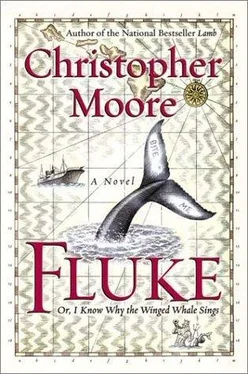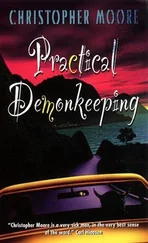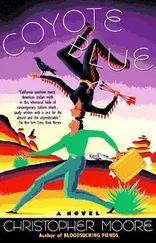"He's moving," Amy said, pointing.
"Moving," Quinn repeated. He looked over the side and saw the white pec fins and flukes flash out of sight. "Hold on." He started the engine.
"They can hunt these kind, as far as I'm concerned," Quinn said after they'd been on the whale for two hours.
They'd recorded three full cycles of the song and gotten a crossbow biopsy, but the whale simply would not fluke, so they hadn't been able to get an ID photo. A lot of good it did to have a DNA sample when you couldn't identify the animal.
"Hunt them and make them into pet food," Nate continued. "Get their tainted, nonfluking genes out of the gene pool."
"Maybe you should have a doughnut or something, get your blood sugar up," Amy said.
"Use their pathetic, nonfluking baleen for corsets and umbrella stays. Use their vertebrae for footstools. Use their intestines to make giant, nonfluking whale sausages to serve at state fairs. Remove their putrid unfluking gonads and —»
"I thought you liked these animals."
"Yeah, but not when they won't cooperate."
The whale had led them five miles out toward Molokai and very close to the wind line, where the waves were too big and the current too fast to stay on a singer. If the whale continued in this direction, they would lose him within the next two dive cycles and the day would be wasted. What was even more frustrating was that this animal was hanging in the water and singing with his tail only a few feet below the surface. Typically, a singer in the channel would be thirty to fifty feet down — this guy was at about seven. Nate kept having to pull up the hydrophone to keep it from bopping the whale in the noggin as they drifted over it.
"He's coming up," Amy said. She grabbed the camera off the seat and aimed it at a spot twenty yards or so in front of the boat so the auto-focus and exposure would already be set.
Nate pulled up the hydrophone with two yanks and started the engine. The whale was moving faster this time. Nate adjusted the throttle to put Amy at the right distance for a full-frame tail shot.
One breath and he was down for ten seconds, another breath twelve seconds, another breath and the great tail peduncle arched high into the air.
"Looks like he's going to do it," Nate said.
"Ready," Amy said.
The tail cleared the water by just a foot, presenting an edge view instead of a flat horizontal view that would give them all the markings, but Nate thought he saw something. Something that looked like black letters on the underside of the tail.
"You get that? You get that?"
"I got what there was. He didn't present very well." Amy had run the motor drive for the whole cycle of the dive, maybe eight frames.
"Did you see those markings? On the underside? The black… uh, stripes?" Quinn whipped off his sunglasses and wiped them with his T-shirt.
"Stripes? Nate, I didn't see anything but edge through the camera."
"Damn it!"
"Look, he fluked. Maybe he will again."
"That's not the point."
"It's not?"
"Get up on the bow, see if you can find him."
Amy stood on the bow and directed Quinn. When she dropped her arm, he killed the engine. And there was the whale, hanging there, singing, his tail not ten feet under the water. They weren't a hundred yards off the wind line, and the boat was drifting away from the whale faster than it had before. They'd be over it for only a minute or so. This close to the wind line, they'd probably lose him the next time he came up. Nate was not going to finish this day wondering if he was having hallucinations again. "Amy, hand me my mask and flippers from the bow cabinet, would you?"
"You're going in the water?"
"Yes."
"But you never go in the water."
"I'm going in the water." Nate opened a plastic Pelican case and pulled out his Nikonos IV underwater camera, checked to make sure it was loaded.
"You're not a water guy."
"See if there's a weight belt in there, too."
"Clay says you're not a water guy. You're a boat guy."
"I'm going to get an ID photo from under his tail. If he's going to be accommodating enough to stay this close to the surface, I'm going to go get the photo."
"Can you do that?"
"Why not?"
She handed him a belt weighted with ten pounds of lead, and Nate buckled it around his hips. He pulled on the mask and fins, then sat on the gunwale with his back to the water. "You're going to drift off of me. I'm not going to try to swim to catch you, so come back and get me. Wait till I wave. I don't want you to start the engine until I'm sure I have the picture. Keep recording until you come get me."
" 'Kay." Amy's mouth was sort of hanging open as if she'd just been slapped.
"This is no big deal."
"Right. You want me to do it? It's my fault I didn't get the shot last time."
"Not your fault. The shot wasn't there. See ya."
Quinn put the snorkel in his mouth and rolled backward off the boat. At seventy-five degrees, the water was still cold enough to knock the breath out of him. He floated to the surface and tried to take controlled breaths until his system adjusted.
The whale was close, only a hundred or so feet away. The song reverberated in Nate's ribs as he kicked over to it. This had to be the "bite me" whale. Even if he'd somehow been wrong about there actually being letters, there were certainly some strange markings on this animal's tail. And there was more than that, too, if he could prove to himself that this was the same animal. It would mean that the whale had stayed in the general area of the Au'au Channel for over three weeks, which was fairly unusual. Of course, conclusions weren't reached from that lack of data. It could simply be that they hadn't computerized the catalog of Hawaiian ID photos the way they had in Alaska. And without the first picture there'd be no proof that this was the same animal, but Quinn would know. He would know. That had become the impetus of this silly mission, not just proving that he wasn't hallucinating. He was a man of science, of facts, of reason. He didn't need to prove he was sane.
I'm out of my mind, he thought. He'd never even heard of anyone trying to do an ID photo underwater.
The animal was perfectly motionless, a great swath of gray in a field of infinite blue. But Quinn thought he saw movement on the far side of the whale. He lifted his head out of the water and looked back at the boat. Amy gave him a thumbs-up. He took a deep breath and made his dive to take the photo.
If he'd been wearing tanks, he might have let the weight belt take him down slowly, but he knew he'd be able to stay down for only forty to sixty seconds, so he went headfirst, kicking hard until he was down twenty or so feet. Then he leveled off, holding the camera in front of him, and looked up at the underside of the whale's tail.
There it was, in big, sans-serif, spray-paint-like letters: BITE ME! He nearly forgot to take the picture. How could this possibly be? Had the animal somehow been caught in a net when it was younger and marked by a sardonic fisherman before being released? Was it one of those animals that had swum up a river and got stranded, then been rescued by an army of fish-and-game people?
He centered the tail in the viewfinder and hit the shutter. Advanced the film and shot again. Then he needed to breathe. He turned and kicked to the surface, but again he saw the dark shape moving near the whale. Remora, he thought. Although it looked too big to be one of the parasite fish that often attached themselves to whales.
At the surface he looked back down at the singer, near the left pec where he'd seen the movement. The animal was doing ribbits. Quinn smiled around his snorkel, took three deep breaths, held, then dove again.
This time, before he could get the camera up, he saw the movement of a dark fin on the far side of the whale, and he squinted to see deep into the blue distance. Blue-water willies, was how he'd always thought of it. The feeling you get when you realize that something big and carnivorous could come at you from any direction, then you start looking for gray missiles in the blue, like looking for a malevolent face to appear at a dark window.
Читать дальше












